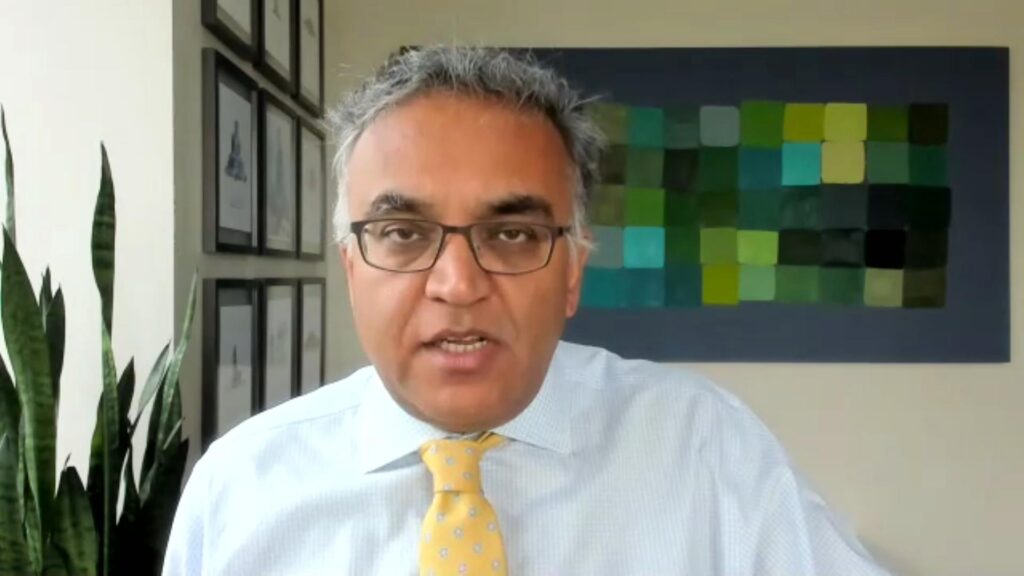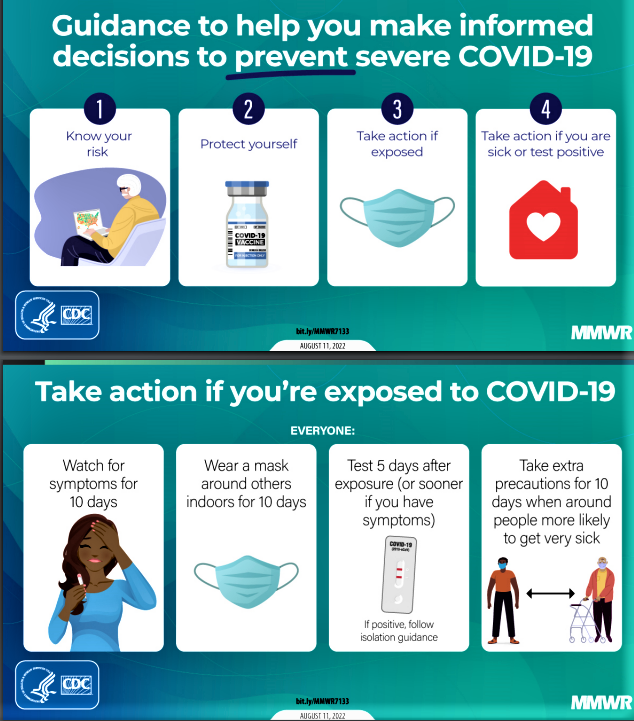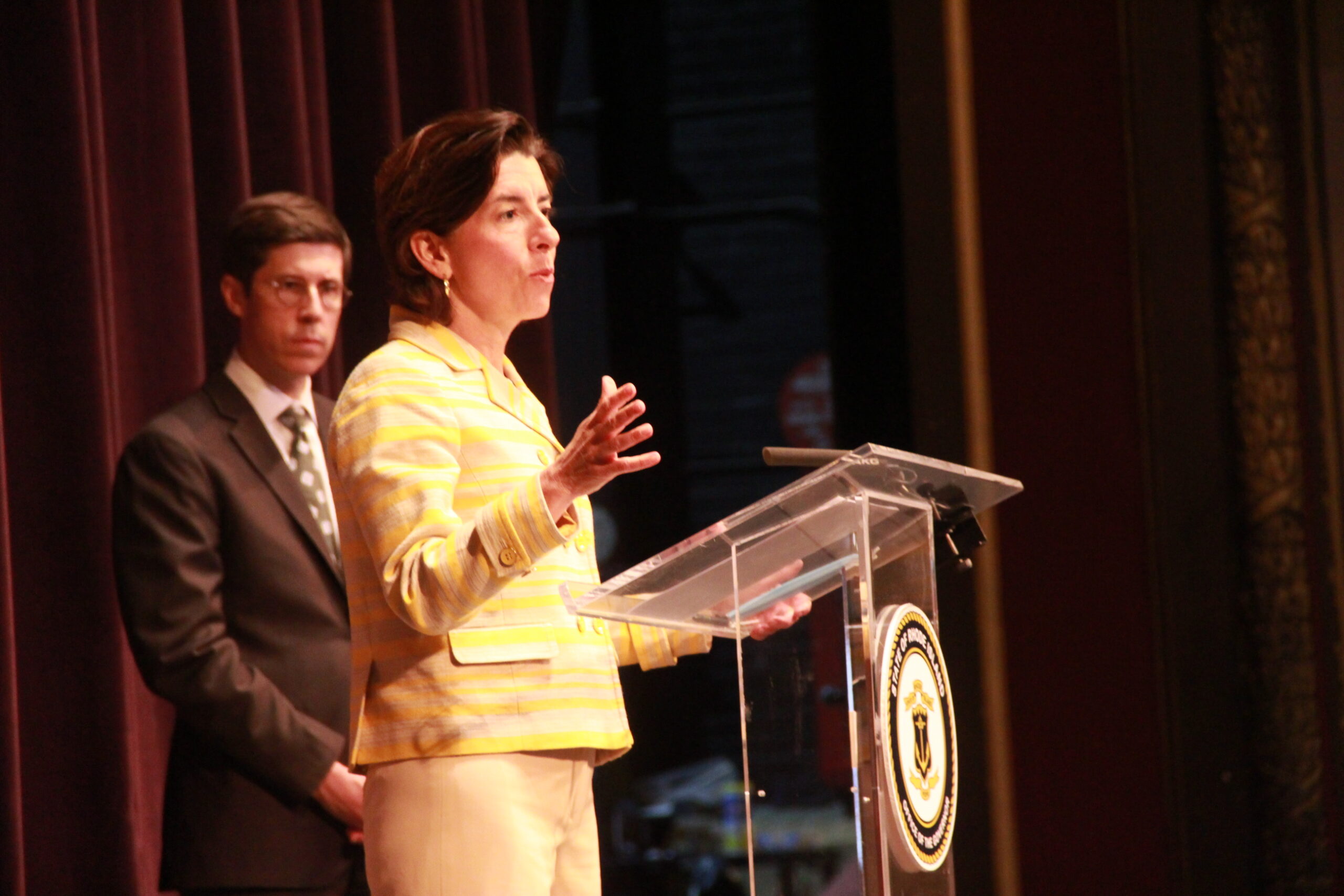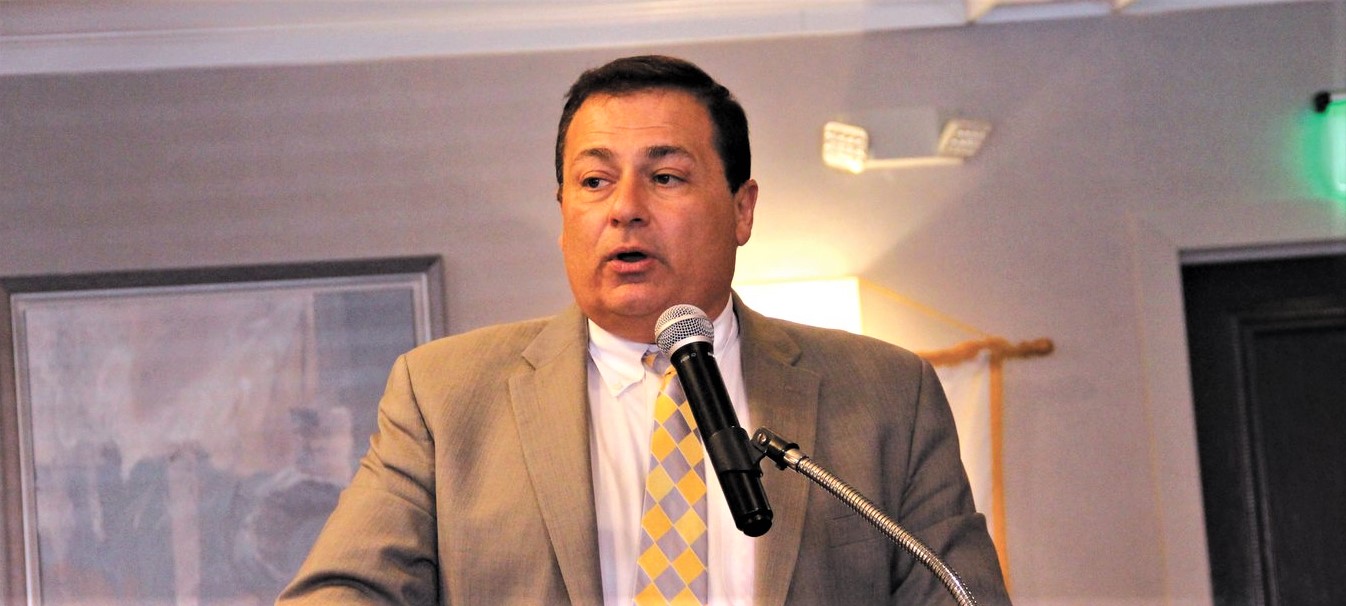Editor’s note: Miller covered the pandemic as a staff writer for the Providence Journal from January 2020 until November 2022, when he left the newspaper to become Ocean State Stories director.
The first year
The first portend of what might await came on Jan. 22, 2020, when the Rhode Island Department of Health issued an advisory about a worsening flu season.
I reported on that in a story that briefly mentioned “the outbreak of the deadly coronavirus in China,” which the federal Centers for Disease Control and Prevention was monitoring. Confirmation of the first American to be infected, a resident of Washington state who had traveled to China, had been made on Jan. 21.
“While CDC considers this is a serious public health concern,” the Health Department declared on its website, “based on current information, the immediate health risk from 2019-nCoV [the strain of virus] to the general American public is considered low at this time. Nevertheless, CDC is taking proactive preparedness precautions.”
For my story, Health Department spokesman Joseph Wendelken told me that his agency “has been in contact with health-care providers. This is routine when federal officials are responding to an acute health issue at the national level. We have sent out a summary of the situation, criteria to guide evaluation of patients, and guidance on reporting, testing, and specimen collection. Again, though, these are the routine steps we take in this kind of situation out of an abundance of caution.”
A month later, I was in New York City to attend Toy Fair, usually a festive event, as part of promotion for one of my books, “Kid Number One: Alan Hassenfeld and Hasbro.”
Over the long weekend, thousands of people attended the convention at the Javits Center. No one practiced social distancing or wore masks — but talk of COVID was everywhere at the center and anywhere I went in the city. As I walked past a construction site near Fifth Avenue one morning, a worker on coffee break held his dust mask up to people passing by and joked: “Get ‘em while you can! Bargain price! Just ten dollars!”
Five weeks later, a repurposed Javits Center opened as a field hospital. Across the country, masks and sanitizers were in short supply, and life had been upended.
In Rhode Island, meanwhile, the CDC on March 3 had confirmed the first local case of COVID: a man who had been on a mid-February trip to Europe by chaperones and students of Pawtucket’s Saint Raphael Academy.
Six days later – on March 9, three years ago this Thursday – Gov. Gina Raimondo, now the U.S. Commerce Secretary, declared a state of emergency, authorizing the state Emergency Management Agency to “create and mobilize mobile support units” and the head of the National Guard to order members to active duty “if necessary, to assist in the response” to COVID. She was joined by Health Department director Dr. Nicole Alexander-Scott and other officials at the start of a series of almost daily press conferences that kept many Rhode Islanders glued to their TVs, radios and devices as fear spread and life as we knew it unraveled.

On March 21, in one of my Reporter’s Notebook stories, “Thoughts on living in a state of dystopia,” I wrote about new phrases and words that had entered daily conversation: “Cough etiquette. PPE. COVID-19. Shelter in place. Lockdown. Self-quarantine. Presumptive positive. Flatten the curve. Contact tracking. Social distancing. Distance learning.” I referenced previous pandemics, the Black Death and Spanish flu, and closed by declaring “Be well. Be safe. Ignore rumor and nonsense. Heed direction from our public-health authorities and trusted leaders.”
Thus the grim milestones of 2020 began.
● On March 28, the first Rhode Islander died of COVID. The Health Department described the deceased as an “individual in their 80s.”
● On March 29, 294 cases of COVID had been reported. Thirty-five people were hospitalized, with 11 in intensive care and nine on ventilators. Schools and daycare centers were closed. At locations on Rhode Island’s southern border with Connecticut, State Police were stopping drivers with out-of-state plates and asking for the address where they would self-quarantine for two weeks.
● Spring brought crushing job losses and previously unimaginable stresses on hospitals, medical and dental practices, front-line emergency workers, and health care professionals from therapists to nurses to nursing home staff. Telemedicine began to emerge as a life-saving option. Schools and religious services sifted to virtual platforms, but internet connectivity inequities further punished some neighborhoods and communities that already were disproportionately suffering.

● May 2020 was one of the deadliest early months of the pandemic, with weekly deaths near 150 and one week exceeding that, according to the CDC. Particularly brutal days included May 4, with 21 new deaths reported; May 22, with 23 new deaths; May 24, with 21; May 28, with 22; and May 30, with 18, according to The New York Times COVID data tracker.
On the home front, home deliveries of food and consumer goods had ramped up and takeout and outdoor dining constituted the takeout scene, but large gatherings – athletic events, concerts, theatrical productions – remained banned. Dissenters took to social media and talk radio to boast about flaunting masking and social-distancing rules — and misinformation, fed by a disbelieving president, was rampant throughout Rhode Island.
● On June 29, the state entered so-called Phase 3 of Raimondo’s response plan, which allowed indoor weddings, musical performances, museum visits, movie-going and other venues to resume – albeit with limited numbers of individuals allowed and other restrictions.

● On July 21, a drive-up test site opened at the Rhode Island Convention Center. Test sites at other locations had been operating since March, some manned by National Guard personnel. Before the year ended, testing was available at state-run sites, pharmacies, doctors’ offices, urgent-care clinics, community health centers and other locations.
● On July 23, the statewide toll reached 1,000 dead, many having perished in hospitals and nursing homes where they were not allowed visits, except on a screen (nationally, deaths had surpassed 149,000). “Normal” wakes and funerals were not conducted. I asked several community leaders to reflect on these terrible numbers.
“Numbers alone can’t quantify the extent of loss in this moment,” said Rabbi Sarah Mack of Temple Beth-El in Providence. “Each soul lost to this pandemic leaves behind innumerable grief. As we attempt to grasp the meaning of 1,000 deaths here in R.I., let the tragedy impel us to go forth tirelessly to preserve life.”
Said Umer Akbar, community member of the Islamic Center of Greater Attleboro: “In the end, if we learn to cooperate and help those in need, and reinforce the positive effects and lessons, then society will have emerged stronger after this pandemic.”
“Suffering unleashes love,” the Rev. Marcel Taillon, pastor of St. Thomas More Parish in Narragansett, said. “There is so much suffering but love is more evident and exposed. That is my experience. It is the cross.”
The Rev. Chris Abhulime, then senior pastor of King’s Tabernacle Church in Johnston, which has a predominantly African American congregation, declared: “We are once again reminded of humanity’s frailty and the fragility of the institutions that surround us. Therefore, we lend our shoulders to cry on, and remind ourselves that we need each other to survive.”
● Oct. 27, Dr. Ashish Jha, then dean of Brown University’s School of Public Health, began a regular podcast (weekly, at first): “COVID: What comes next.” Forty-one episodes would be produced, with the last on Jan. 2, 2022. In March 2022, it was announced that Jha would take a leave of absence from Brown to become the White House coronavirus coordinator.

● On Nov. 30, Care New England opened a 353-bed COVID field hospital on Sockanosset Cross Road in Cranston. The next day, Lifespan opened a 600-bed field hospital at the Rhode Island Convention Center.
● As 2020 neared its end, the numbers continued to climb. Two days before Christmas, Rhode Island had recorded 1,704 deaths and 82,066 known COVID cases; in all of America, 324,948 had died and more than 18.4 million known cases had been confirmed.

The second year
But hope was on the horizon.
Announced in May 2020, Operation Warp Speed, a government/private partnership, accelerated development of a COVID vaccine and by the end of 2020, two companies had received emergency authorization for use of their products: Moderna and Pfizer-BioNTech. High-risk health care professionals were the first to be vaccinated in Rhode Island, in mid-December.
● On Jan. 12, 2021, a mass vaccination site run by the National Guard opened in an unused Citizens Bank building on Sockanosset Cross Road in Cranston.
● On Feb. 24, Lifespan closed its Convention Center field hospital after admitting and discharging 516 patients. Nine days later, the Care New England field hospital also closed, after admitting and treating 208 patients.
● On Feb. 27, the FDA approved use of a third vaccine, manufactured by Johnson & Johnson.
● On March 2, Dan McKee was sworn in as Rhode Island governor, succeeding Raimondo, who had gone to Washington. Meanwhile, pharmacies including CVS and Walgreens began offering vaccines to the public as Rhode Island began its ascent to the state with the highest percentage of residents who had been inoculated. According to the latest CDC report, posted on Feb. 28, 2023, 87.7% of Ocean State residents had completed a primary series and 95% had received at least one dose, making Rhode Island the national leader.
● On May 10, the federal government approved use of the Pfizer vaccine for children 12 to 15 years old. Within days, 300 Rhode Islanders in that age group had received a first dose.
● On June 18, McKee, Dr. Philip Chan and other officials at the governor’s regular press conference warned of the threat, particularly to unvaccinated people, posed by the deadly and highly contagious Delta variant, which was on its way to becoming dominant. It would peak in late summer, when deaths, hospitalizations and positivity rates all rose, though not nearly at the levels seen in other states with lower vaccination rates.
During a press conference on Aug. 10, McKee announced that all health care workers at all state-licensed public and private health care facilities – hospitals, nursing homes and other centers – would be required to be vaccinated by Oct. 1. The declaration prompted an additional outcry by individuals opposed to vaccinations who had been protesting during the summer.

● On Sept. 22, the FDA authorized a single booster shot of the Pfizer vaccine. Approval of Moderna and Johnson & Johnson boosters followed in the weeks to come.
● On Oct. 14, McKee, Alexander-Scott and pediatrician Dr. Elizabeth B. Lange, then president of the Rhode Island Medical Society and an American Academy of Pediatrics fellow, held a press conference at the Providence Children’s Museum to urge parents and guardians to have children ages five to 11, the youngest group to become eligible, to be vaccinated. Anti-vaxxers attempted to disrupt the conference.
As the fall unfolded, another variant, Omicron, raised alarms. First reported to the World Health Organization in November, Omicron was initially detected in Rhode Island in December, prompting the McKee administration and the Health Department to begin preparations for what many expected would be another deadly surge that would again tax hospitals and health care systems. McKee’s staff on Dec. 11 said, “the comprehensive set of actions the governor is focused on are vaccination, testing, masking and staffing capacity.”
Another troubling development was affecting increasing numbers of Rhode Islanders: long COVID, a post-acute sickness syndrome that can cause chronic fatigue, headaches, dizziness, difficulty concentrating or thinking that is sometimes called “brain fog,” joint pain, diarrhea, depression, anxiety among other symptoms, according to the CDC. Long COVID can persist for months or years, with no cure. “Pretty much everything hurts,” North Kingstown resident Shannon Maynard told me for a story. “I have pain in my back and my neck and all of my muscles, every day.”
The year 2022 dawned with little cheer, as January saw a so-called “fourth surge” that brought record numbers of cases and hospitalizations – though not record numbers of deaths, thanks in large part to high vaccination rates and the availability of booster shots.
The surge had subsided by early February, when interim Health Department director Dr. James McDonald, who had stepped into leadership after Alexander-Scott resigned on Jan. 13, spoke during a press conference of coronavirus eventually becoming “endemic… a disease we’re going to learn to live with.” He later predicted COVID would become “a preventable, treatable infectious disease,” likely of seasonal occurrence, much like pneumonia and the flu.
The third year
With the numbers continuing to trend favorably, vaccines widely available at non-government sources, home test kits proliferating, most schools reopened, and many activities back to what could be considered “normal,” or close to it, the state on March 12, 2022, closed the Sockanosset vaccination site.
But COVID had not disappeared. Viral evolution, a process by now all-too-familiar to the layperson, had produced yet another variant: the BA.2, easily transmitted but less likely to cause severe illness than Omicron.
On April 12, 2022, The New York Times coronavirus tracker reported that Rhode Island led the nation in new cases per capita: 32 cases per 100,000 people over the previous seven days. Health Department spokesman Wendelken said that “the metric we are focused on most right now is hospitalizations… Fortunately, despite the uptick in cases that we have seen, our hospitalization numbers are relatively low.”
Also encouraging was the decision by the CDC and FDA to approve a second booster shot of the Pfizer and Moderna vaccines — and the arrival of a new weapon in the fight, the drug Paxlovid, which had been approved in December 2021 for treatment of mild to moderate cases.
But a reminder of the seesaw nature of the pandemic came on May 18, when the CDC, concerned about increases in spread of the disease, said residents and leaders in many areas of the U.S., including Rhode Island, should consider more stringent containment measures, among them more testing and mask-wearing in indoor public settings. Under the agency’s new Community Level rating system , Providence, Kent, Bristol and Washington Counties were rated at medium risk; Newport County was rated high.
The risk abated during the summer of 2022, and on Aug. 11, the CDC updated its guidance, dropping the six-foot social distancing standard, among other measures. Hospitals, medical and dental practices and other health care providers continued with masking requirements, however, and some screened patients before visits.

● Another milestone was reached on Aug. 31, when the FDA authorized use of a third Pfizer or Moderna booster – the so-called bivalent shot, which could be received together with a flu shot. Many public-health experts believed a COVID booster would become a part of the annual inoculation regimen.
In late August and early September, students began the school year with few COVID requirements. Halloween 2022 more closely resembled the traditional day than in 2021 and 2020, and many families celebrated Thanksgiving and the winter holidays as they had before, guided by public-health leaders who urged anyone who showed signs of any illness to forgo festivities to prevent spread of coronavirus, the flu, RSV and the common cold.
But like the ghost of Christmas past, coronavirus continued to haunt the state. That reality was brought home in dramatic fashion when Trinity Rep on Dec. 22 canceled six days of performances of “A Christmas Carol,” one of Rhode Island’s most cherished winter traditions, “due to the number of positive COVID cases in the company.” Trinity Rep declared that “we need to pause to prevent further spread and keep everybody safe.”
The year 2023 was a month old when, on Jan. 30, the Biden Administration announced that it planned to let the COVID public health emergency expire in May. The end will trigger a number of complex developments involving federal COVID assistance and it was met with a mixture of criticism and praise – and immediately became a political football in a bitterly divided Congress. Administration officials said little publicly but a senior administration official told Politico: “This decision is based on what is best for the health of our country at this time… We’re in a pretty good place in the pandemic, we’ve come through the winter, cases are down dramatically from where they were the past two winters.”
An average of 113 cases per day were reported in Rhode Island in the week that ended on Friday, March 3, 2023, according to The New York Times tracker. Cases have decreased by 28 percent from the average two weeks ago and deaths have decreased by 12 percent. Since the beginning of the pandemic, a total of 460,045 cases have been reported in the state. At least 1 in 272 residents have died from the coronavirus, for a total of 3,896 deaths.
In the three years since Raimondo declared a state of emergency, no community in Rhode Island went untouched by COVID and four were especially hard-hit: Central Falls, Pawtucket, Providence and Woonsocket, the urban core. The pandemic lay bare systemic health and economic disparities, causing disproportionate suffering and loss in communities of color.
For Rhode Island as a whole, COVID has also exacerbating longstanding deficiencies in behavioral health care. In its Feb. 22 edition, Ocean State Stories explored some aspects of what many call a crisis in such services for adults.
And in a Providence Journal opinion essay published on Feb. 25, Tides Family Services CEO Beth A. Bixby, an Ocean State Stories Advisory Board member, highlighted a “behavioral health crisis [that] is as dangerous to our children as COVID-19 and other respiratory viruses; in fact, for some, this is life or death. In 2020, suicide was the second-leading cause of death for young people ages 10 to14.” She cited Rhode Island Kids Count data showing how emergency department visits for “children experiencing a behavioral health crisis increased by 92% from 2019 to 2022.”
State Sen. Lou DiPalma, chairman of the Senate Committee on Finance and a longtime leader of the movement to rebuild Rhode Island’s behavioral health care system, told Ocean Stories that “the COVID-19 pandemic has certainly taken its toll on just about every Rhode Islander. Especially hard hit were our seniors and those supporting them, those served by the state’s health and human service programs, and the associated caregivers.
“The pandemic has shined a spotlight on our behavioral healthcare systems, nursing homes, hospital and associated medical and non-medical staffs. All are in urgent need of rebuilding to ensure we are appropriately prepared for the next pandemic, which surely will come, the only question being when. We must be ready, and the time to start is now. Delaying is not an option.”

Q & A with talk show host Tara Granahan
Q & A with Central Falls Mayor Maria Rivera
Next week on Ocean State Stories: National speaker and activist Ashley Bendiksen, a Rhode Island resident, writes about domestic and sexual violence, which occurs in every city and town in the state. Bendiksen is herself a survivor of this type of violence.
Last week: Laughter is good medicine. And that’s no punch line.






